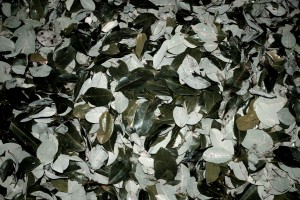THE satellite city of El Alto is a series of dusty roads travelled by Andean women wearing tall bowler-like hats over long black plaits and carrying food, clothes or even children in brightly striped cloth slings. Translated, El Alto means ‘the high’ – an apt moniker for a city nestled into the side of mountains 4000 meters above sea level. At this altitude, a short walk is enough to cause even the most-seasoned athlete to feel nauseated and pant from exhaustion – a phenomenon known in Spanish as soroche. Following local custom, tourists who descend the steep, winding road into La Paz in cramped buses chew handfuls of dry, green foliole from plants native to the region: coca leaves.
In addition to providing weary travellers with relief from the effects of altitude sickness, coca serves as the raw ingredient used to produce cocaine. For this reason, the abundance of coca leaves in Bolivia presents a tension that affects almost all aspects of life and government. President Evo Morales’ solution is to rid the country of illegal cocaine production by developing an industry for coca-based products, such as shampoo and liquors. He makes the distinction simple: “Coca: yes. Cocaine: no.” But desperate economic dependence, along with the cultural significance of the coca leaf, means that while the first part of Morales’ slogan is very unlikely to be defeated, Bolivia will, despite its best efforts, likely continue to say “yes” to cocaine.
Give Me Coca or Give Me Death
The practical, social and spiritual significance of coca leaves in Andean culture can scarcely be overstated. Apart from curing soroche, the leaves also provide Bolivians, many of whom work long days in mines and fields from a young age and suffer from poor dietary habits, with a stimulant to fight hunger, thirst and fatigue. Most importantly, coca plays a central role in many ancient rituals for Bolivia’s indigenous people. As part of a rich tradition called hallpay, villagers celebrate a participant’s membership of the ayllu (community) by preparing and sharing a k’intu (a bundle of coca leaves). The order in which the k’intu is passed from person to person reflects the community’s social hierarchy: senior members are offered bundles first, while junior members receive the bundle last. The act of chewing the coca leaves acts as a rite of passage: children are not invited to chew, but rather help their parents prepare the k’intu. As children progress to adulthood and accumulate adult chores, they are invited into hallpay. Before a member of the ayllu begins to chew, they offer an invocation to the Earth, the Sacred Places, and the ayllu. This tradition, passed down from the Inca, is a deep source of cultural pride for indigenous Bolivians.
However, the UN currently considers coca an illegal narcotic, alongside other substances such as heroin, and calls upon foreign governments to criminalise the act of growing coca leaves. Over the past four decades, the US has offered billions of dollars in military assistance and foreign aid in an effort to control and eradicate cocaine production in Latin America. Those projects met resistance when, in 2006, President Evo Morales became the first politician of indigenous descent to hold Bolivia’s highest office. In a country where over half the population is indigenous, and which underwent a transition from dictatorship only four decades ago, Morales’ election is a testament to the growing political importance of issues that primarily affect the indigenous community – pivotally, coca production. Morales, a former coca farmer, rose through the ranks of peasant organisa- tions and first ran for president in 2002. Though unsuccessful, his Movement to Socialism (MAS) party found widespread support in 2005. It was in part the “Coca: yes. Cocaine: no” policy that contributed to Morales’ presidential victory. Support for the policy is widespread in the countryside: a common slogan painted in brightly colored block capitals onto walls, houses and sometimes even onto mountainsides is “coca o muerte” – coca or death.
Coca: Yes. Cocaine: Perhaps
Morales’ views on the coca leaf have had a chilling effect on Bolivia–US foreign relations . In 2008, Morales expelled former US ambassador Philip Goldberg after accusing him of conspiring against Bolivia’s government and promptly suspended the operations of the US Drug Enforcement Administration in Bolivia. Experts have questioned the impoverished state’s wisdom in dealing with narcotics trafficking without the US. In Bolivia, the EU has funded measures to provide Bolivian farmers with incentives to farm crops, such as pineapples, instead of coca. By and large, these measures have proved ineffective. Bolivia’s poor infrastructure prevented many of the crops from ever reaching the market. In addition, the low price of food crops in comparison to coca leaves has meant such initiatives have never taken root. Other South American leaders have attempted to find alternative markets for coca-based products in the past, with little record of success.
While Bolivia is currently the third biggest cocaine producer in the world, the majority of cocaine that reaches Western countries can be traced to Colombia. Colombia, where cocaine barons are tolerated by the FARC, has traditionally been where shipments undergo the final stage of processing. However, as forces loyal to the Colombian government have gained the upper hand in the country’s ongoing civil war, cocaine producers have been forced to scout for new locations – most notably, Bolivia. As some choose to flee southward, they bring with them knowledge and expertise that increases the efficiency of cocaine production and reduces the frequency of detection. By both intervening in Colombia and taking a hard-line stance on coca production, the United States bears at least some responsibility for the “lose-lose” choice that Bolivia faces about the future of coca production. The Obama administration’s decision to retreat from using the phrase “War on Drugs” could signal – for better or worse – a change in US anti-cocaine policy. Certainly, the intervention in Colombia has done little to stem the flow of drugs to the US.
Morales and those charged with administering drug policy in the US must treat the issue of cocaine production in Bolivia delicately. Morales has displayed considerable political courage by resisting US pressure to halt the production of coca, thereby standing by his “Coca: yes” pledge. Whether he has the political muscle required to tackle the violence, corruption and drug barons in Bolivia that his “Cocaine: no” stance demands remains to be seen.




